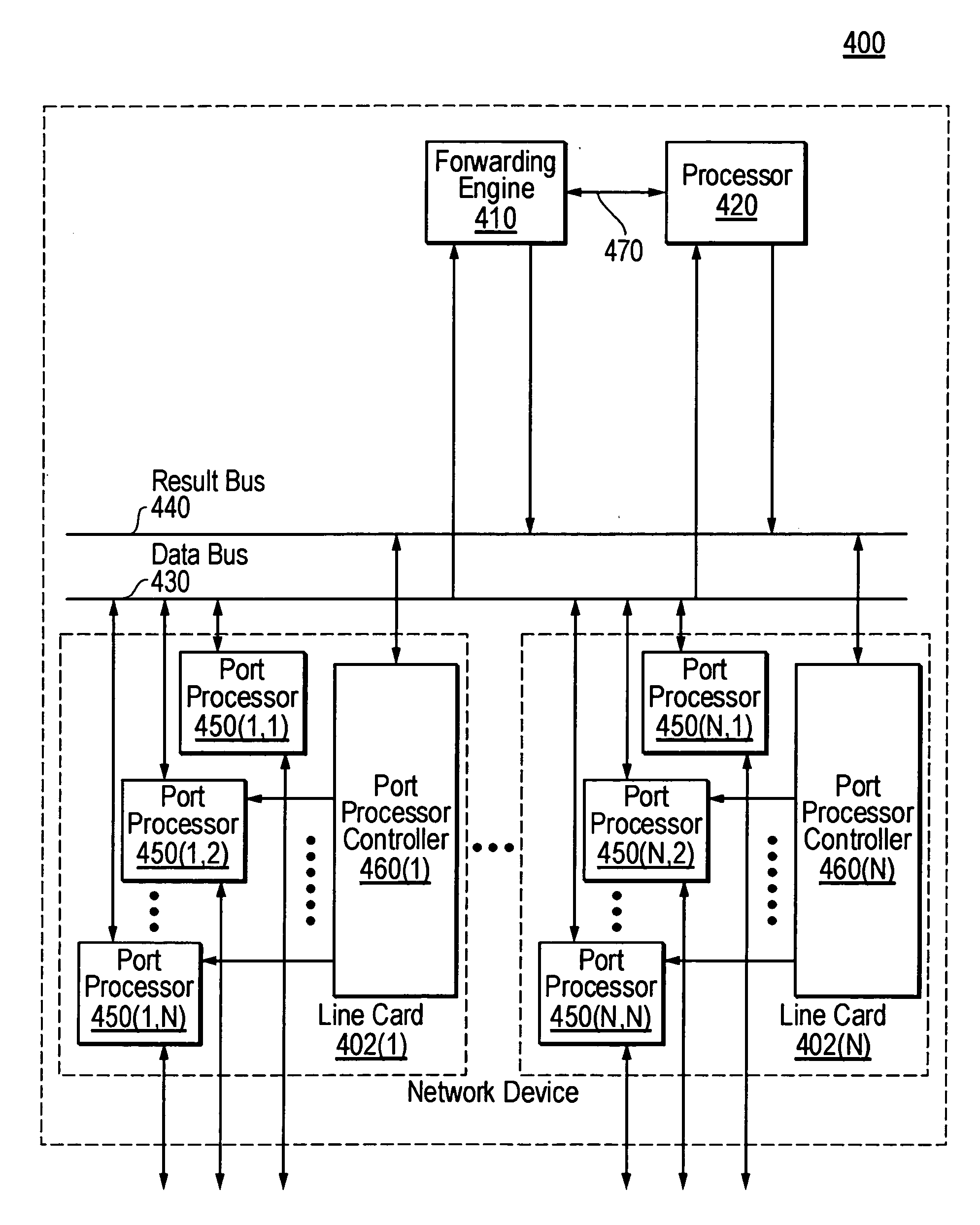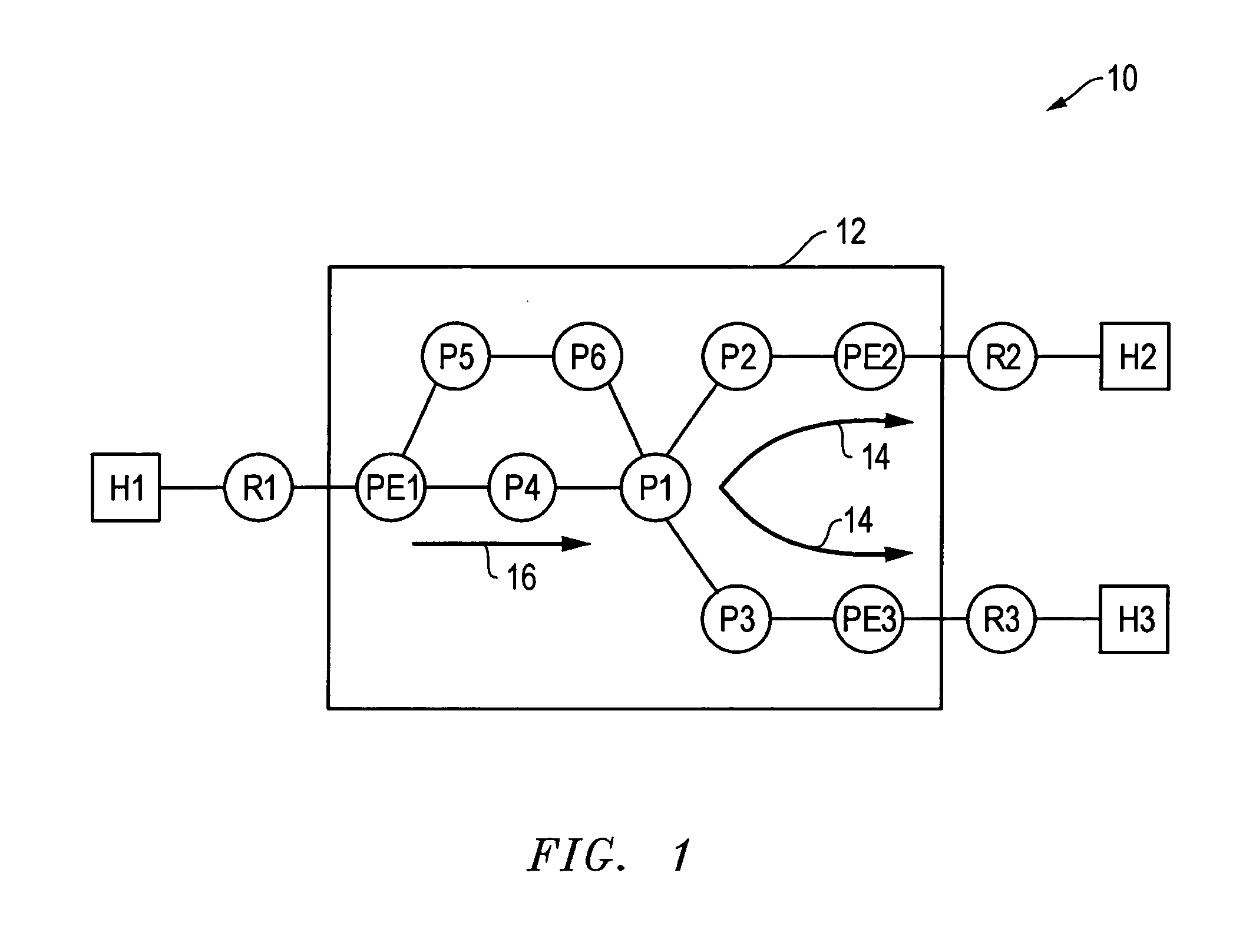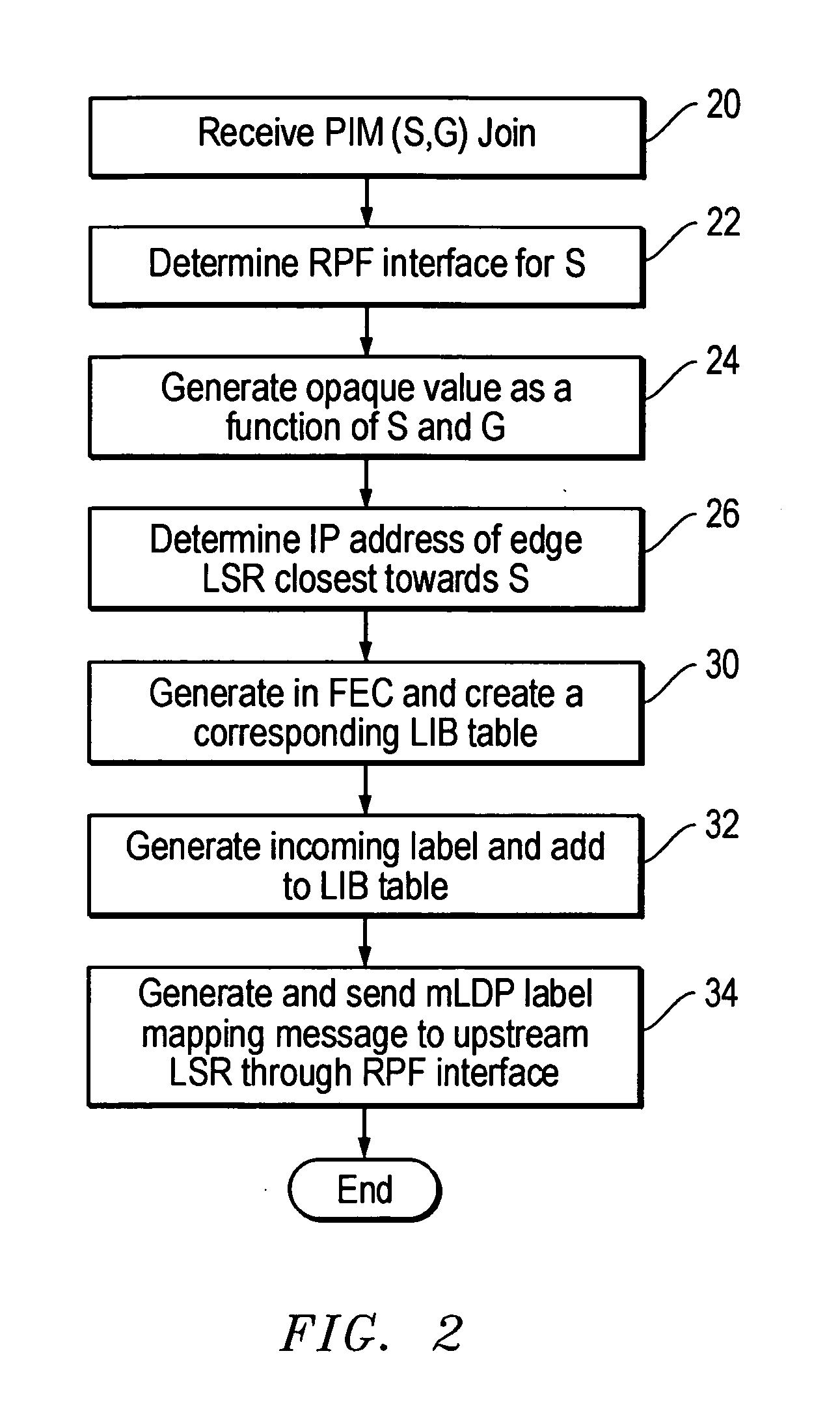Automation fallback to P2P LSPs for mLDP built multipoint-trees
a multipoint tree and automatic fallback technology, applied in data switching networks, special service provisioning for substations, digital transmission, etc., can solve the problems of prohibitively expensive creation of private networks, and problems can arise in mpls networks containing lsrs which are not mldp enabled
- Summary
- Abstract
- Description
- Claims
- Application Information
AI Technical Summary
Benefits of technology
Problems solved by technology
Method used
Image
Examples
Embodiment Construction
[0017] U.S. patent application Ser. No. 11 / 267,674 describes a method for creating a P2MP LSP within an MPLS enabled network. Each of the LSRs within the MPLS network described in U.S. patent application Ser. No. 11 / 267,674, are presumed to be mLDP enabled. To illustrate, FIG. 1 is an exemplary network 10 consisting of hosts H1-H3 coupled to PIM enabled routers R1-R3, respectively. FIG. 1 also shows router R1 coupled to routers R2 and R3 via an MPLS network 12. MPLS network 12 includes MPLS enabled edge LRSs PE1-PE3 coupled to MPLS enabled core LSRs P1-P6. In addition to being MPLS enabled, edge LSRs PE1-PE3 are PIM enabled and coupled to routers R1-R3, respectively. For purposes of explanation, it will be temporarily presumed that each of the LSRs within MPLS network 12 is mLDP enabled or capable of operating in accordance with the invention described in U.S. patent application Ser. No. 11 / 267,674.
[0018] Presume host HI is a source that generates multicast data packets destined fo...
PUM
 Login to View More
Login to View More Abstract
Description
Claims
Application Information
 Login to View More
Login to View More - R&D
- Intellectual Property
- Life Sciences
- Materials
- Tech Scout
- Unparalleled Data Quality
- Higher Quality Content
- 60% Fewer Hallucinations
Browse by: Latest US Patents, China's latest patents, Technical Efficacy Thesaurus, Application Domain, Technology Topic, Popular Technical Reports.
© 2025 PatSnap. All rights reserved.Legal|Privacy policy|Modern Slavery Act Transparency Statement|Sitemap|About US| Contact US: help@patsnap.com



